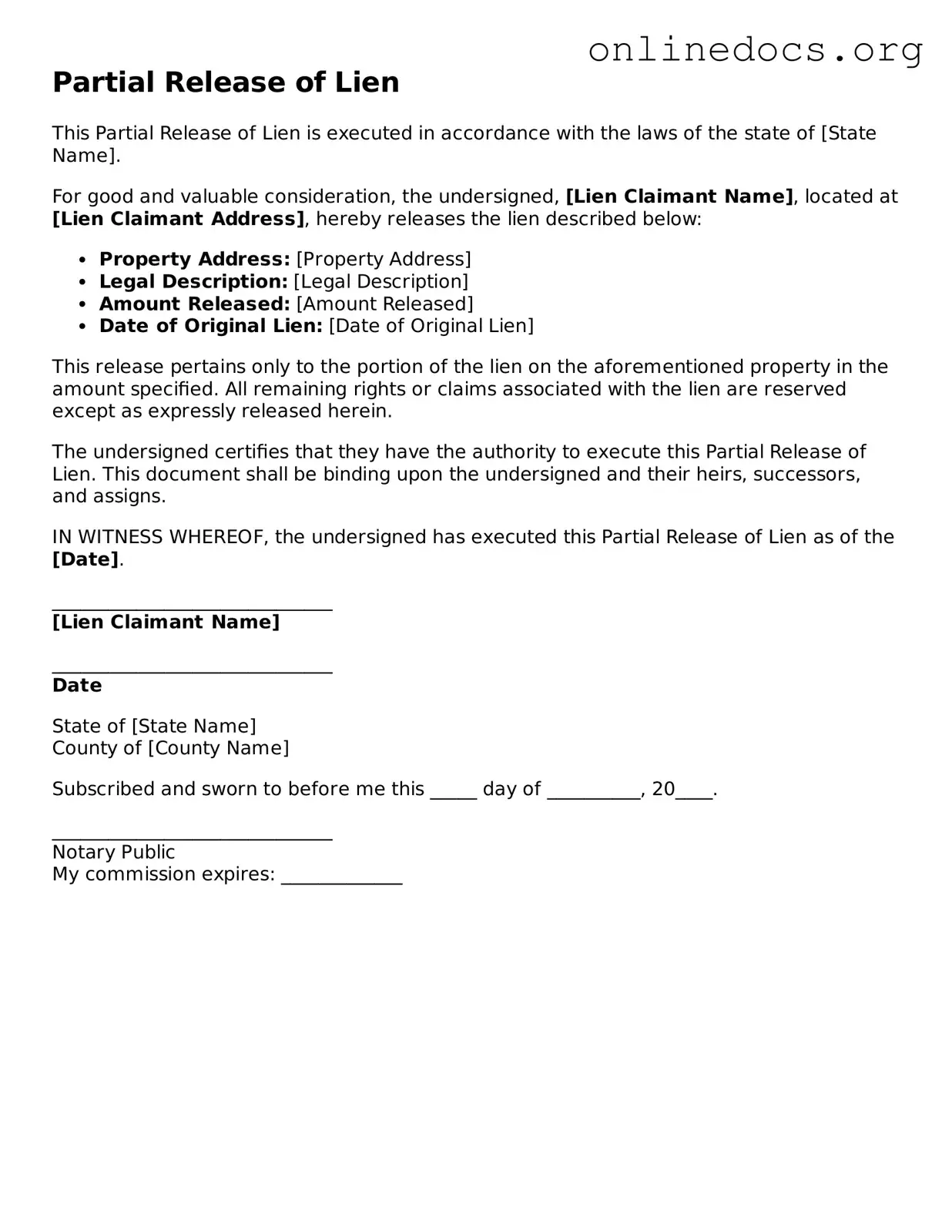The Partial Release of Lien form is similar to the Satisfaction of Mortgage document. Both documents serve to release a claim against a property. While a Partial Release of Lien is used when a contractor or supplier is paid for part of their work, a Satisfaction of Mortgage is executed when a borrower fully repays their mortgage. In essence, both documents signify that a financial obligation has been fulfilled, thus clearing the property of encumbrances related to those debts.
Another document that shares similarities with the Partial Release of Lien is the Release of Claim. This form is often utilized in personal injury cases, where a claimant agrees to relinquish their right to pursue further claims against a defendant after receiving compensation. Like the Partial Release of Lien, it formally acknowledges that a financial obligation has been settled, ensuring that the claimant cannot seek additional funds for the same incident.
The Assignment of Lien is also comparable to the Partial Release of Lien. This document involves transferring a lien from one party to another, often seen in real estate transactions. Both documents deal with the rights associated with liens, but while the Partial Release indicates a partial fulfillment of payment, the Assignment of Lien signifies a change in the party holding the lien. They both impact the rights of property owners and creditors.
Similar to the Partial Release of Lien is the Notice of Completion. This document is filed by a property owner to declare that construction has been completed. It serves as a signal to contractors and suppliers that they must file any claims or liens within a certain timeframe. Both documents help clarify the status of financial obligations related to property, ensuring that all parties are aware of their rights and responsibilities.
The Release of Lien Waiver is yet another document that aligns with the Partial Release of Lien. This waiver is typically signed by a contractor or supplier to confirm that they have received payment and will not place a lien on the property for the amount paid. While the Partial Release of Lien indicates that a portion of a debt has been satisfied, the Release of Lien Waiver confirms that the contractor waives their right to claim a lien for the paid amount, providing reassurance to property owners.
The Final Accounting Statement is also related to the Partial Release of Lien. This document outlines the final costs associated with a project, including any payments made to contractors. While the Partial Release of Lien addresses the status of payments and claims, the Final Accounting Statement offers a comprehensive overview of all financial transactions, ensuring transparency and clarity for all parties involved.
When engaging in real estate transactions, understanding various legal documents is crucial, especially those that deal with liabilities and claims. For instance, the California Release of Liability form is essential for parties involved in activities with potential risks, as it clarifies responsibilities and waives the right to legal action against risks associated with such activities. For more information, you can visit californiadocsonline.com/release-of-liability-form/.
Lastly, the Affidavit of Payment is akin to the Partial Release of Lien. This document is often used to affirm that all payments related to a specific project have been made. It provides a sworn statement from the contractor or supplier, confirming that they have received payment and will not pursue further claims. Similar to the Partial Release of Lien, it helps protect property owners from unexpected liens, fostering trust and clarity in financial dealings.
